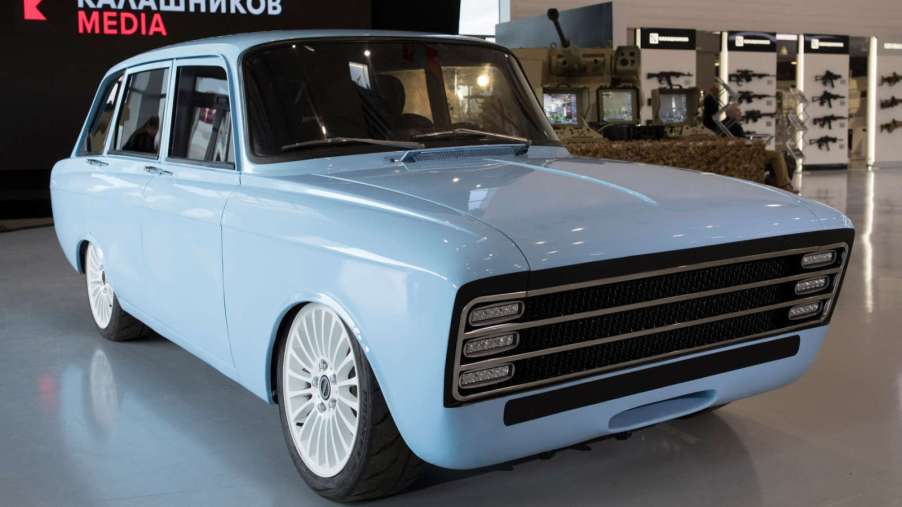
‘Russian Tesla’ 2018 Kalashnikov CV-1 EV: Only 1 Was Ever Made
When you think of Russian-made cars, the Lada or GAZ come to mind. The good thing about all Russian cars is that the quality is consistent. Consistently bad. So is the engineering. But if there was one company that could pull off making a “Russian Tesla”, it is Kalashnikov. Never heard of them? Sure you have: the “K” in the Soviet assault rifle AK-47 stands for Kalashnikov. Avtomat Kalashnikov 1947, to be exact.
Kalashnikov made more than just AK-47s

Back when the AK-47 was a new invention, it was designed and built by Kalashnikov’s Izhevsk Machine-Building Plant. The company cranked out more than just automatic rifles. Everything from weapons to military robots was created and built there. Mostly, it was a source for whatever the Russian army needed to be built.
But right next to where the AK-47 was being made, was another assembly line. This was for the Moskvich line of automobiles. The Moskvitch name means ‘a native of Moskow.” It started building cars in the late-1920s.
Kalashnikov’s Moskvitch was a miserable car built for horrible roads

The Moskvitch 408 became popular after the war. They were rugged because they were crude. The 408 stood up to the miserable conditions of roadways in the Soviet Union, mainly based on truck-like frames and suspensions.
All were rear-engine sedans, riding on solid axles and leaf springs. The 408 was eventually exported to other countries, mostly in the Eastern Bloc. But by Russian standards, it served those who could afford a car well.
But by the fall of the Soviet Union, Moskvitch was in financial straits. Soon it stopped manufacturing. Everything was abandoned, including cars in various stages of completion, and administrative offices left completely intact. For decades, if one desired to begin Moskvich production, the lights could be flipped on, and you’d instantly be back in business.
Why was Russia building the Kalashnikov CV-1?

Jumping to 2017, the Kalashnikov family thought they could revive auto production. They would create an all-electric sedan built to the same engineering standards as Tesla. So began the development of the Kalashnikov CV-1.
The basis for this venture was the 1976 Moskvitch 1500 Estate; mostly a hatchback version of the 408. Why not? There were plenty still around littering the old Mosckvitch plant. But the stomach pump four-banger got replaced by a 90-kWh electric motor.
Supposedly, it could pound out 680 hp with a range of 220 miles. No great numbers, but not terrible for 2018. That is when the CV-1 debuted at the Army 2018 International Military Forum in Kubinka, Russia. In reality, it had a somewhat cool retro vibe, especially for Russia. Of course, that’s because the body wasn’t retro but just old.
The Russian government’s grandiose pronouncements included things like the CV-1 would “let us stand in the ranks of global electric car producers such as Tesla.” One reason was because of its “complex systems” and a “revolutionary inverter.” So Russia put out the word that it was taking EV technology to another level. It was expected to hit the market soon.
Does Russia have any Russian-made electric vehicles?

But did it? No. In fact, it evaporated. The CV-1 has never been heard nor seen ever again. This leads many to suggest it was all just a propaganda tool meant to show Russia’s EV advancements when in reality, it had none. At least in 2018.
Today, Russian manufacturer Zetta was supposed to begin production of the first EV by the end of 2021. With all of the country’s efforts surrounding its ill-conceived, brutal war on Ukraine, those plans are now on hold. And, in fact, it may never happen if the worldwide sanctions stay in place. Too bad Vladimir Putin isn’t a car guy, instead of the evil dictator he has revealed himself to be.



